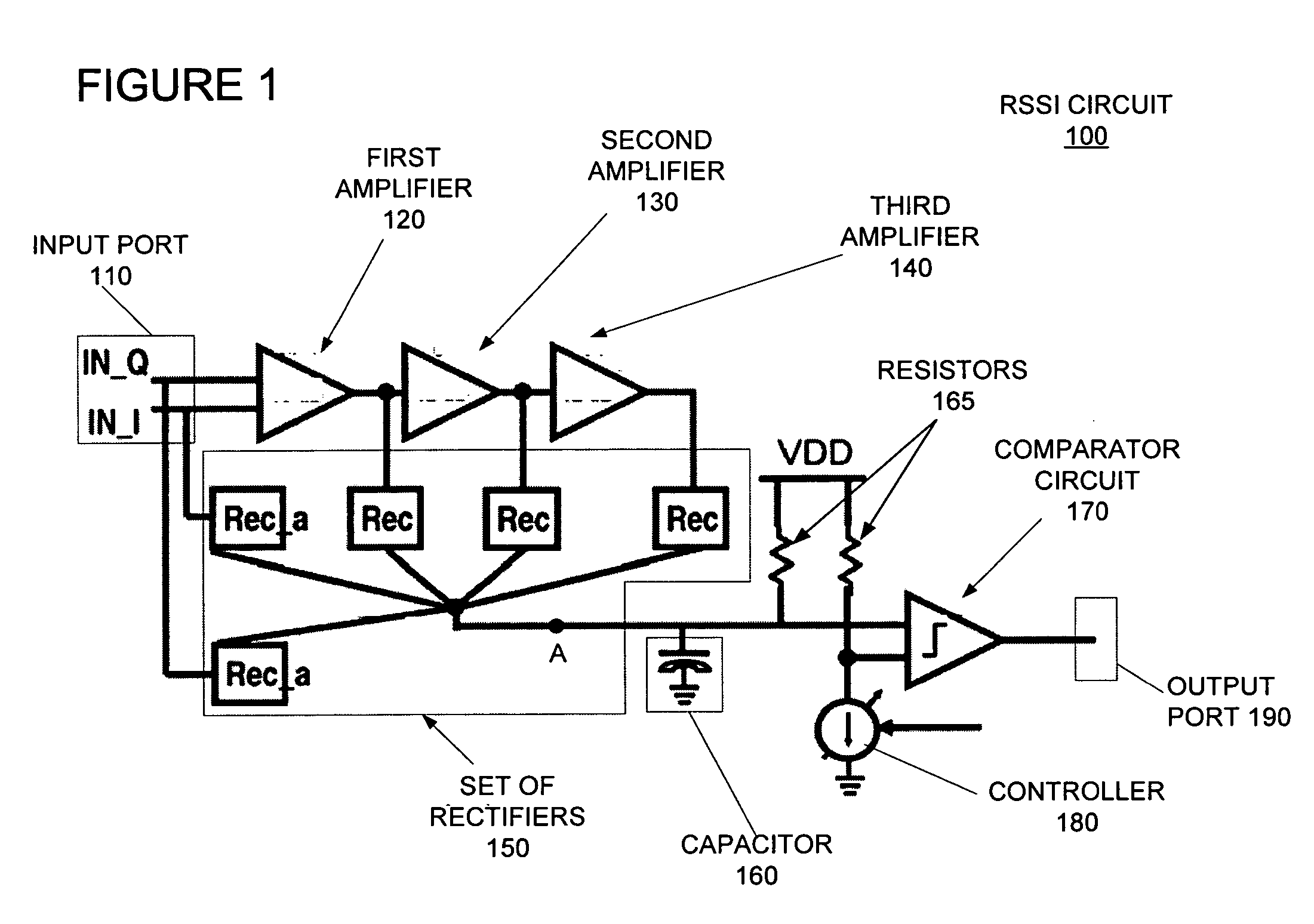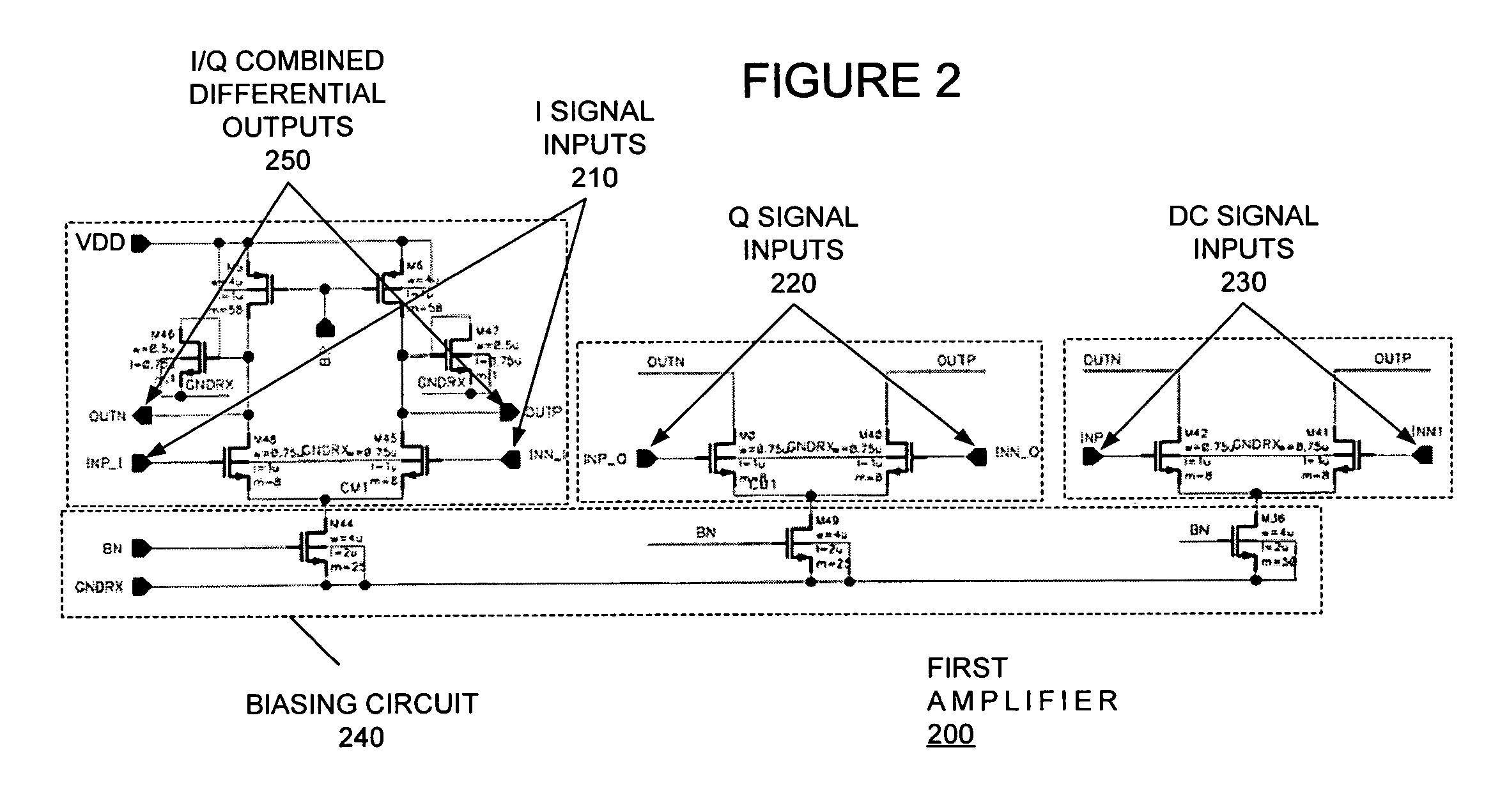Amplifiers and amplifying methods for use in telecommunications devices
- Summary
- Abstract
- Description
- Claims
- Application Information
AI Technical Summary
Benefits of technology
Problems solved by technology
Method used
Image
Examples
Embodiment Construction
[0017]FIG. 1 illustrates a schematic representation of a Received Signal Strength Indicator (RSSI) circuit 100 that may be included in telecommunications devices according to certain embodiments of the present invention. In operation, circuit 100 receives signals through input port 110. The signals received at input port 110 are typically AC components of RF signals received by a telecommunication device that includes circuit 100.
[0018] Usually, before reaching input port 110, an AC component has been amplified by an amplifier outside of circuit 100 such as, for example, a Low-Noise Amplifier (LNA) that is operably connected to input port 110. After amplification, the AC component is typically mixed down to an Intermediate Frequency (IF) by a mixer operably connected between the outside amplifier and input port 110.
[0019] As illustrated in FIG. 1, circuit 100 may receive both a Q input signal (IN_Q) and an I input signal (IN_I) from an IQ mixer that may be operably connected to in...
PUM
 Login to View More
Login to View More Abstract
Description
Claims
Application Information
 Login to View More
Login to View More - R&D Engineer
- R&D Manager
- IP Professional
- Industry Leading Data Capabilities
- Powerful AI technology
- Patent DNA Extraction
Browse by: Latest US Patents, China's latest patents, Technical Efficacy Thesaurus, Application Domain, Technology Topic, Popular Technical Reports.
© 2024 PatSnap. All rights reserved.Legal|Privacy policy|Modern Slavery Act Transparency Statement|Sitemap|About US| Contact US: help@patsnap.com










